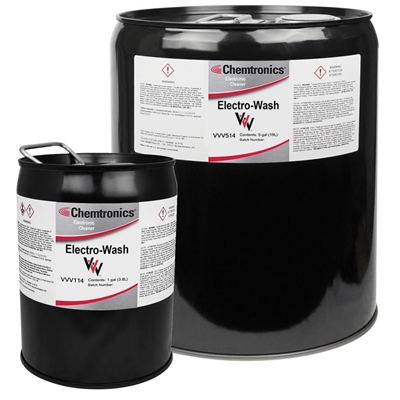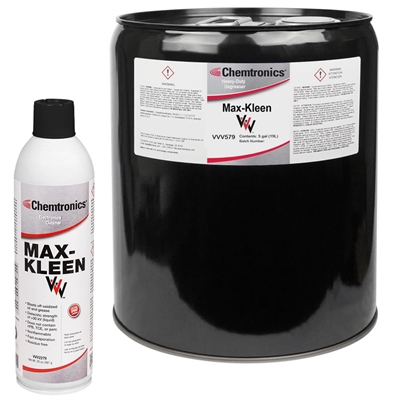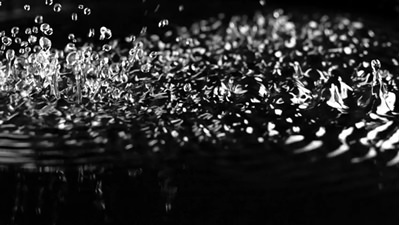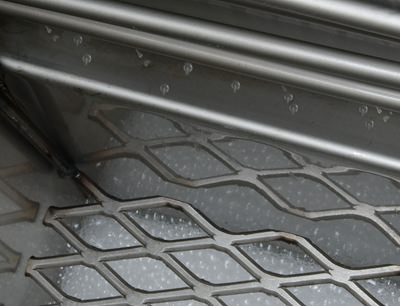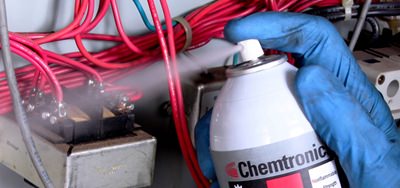The US Environmental Protection Agency (EPA) has determined that n-propyl bromide (aka. nPB, 1-Bromopropane, 1-BP, CAS 106-94-5) “presents an unreasonable risk for 16 conditions of use” in an August, 2020 report. “Nontechnical Summary of the Risk Evaluation for 1-Bromopropane (n-Propyl Bromide)” states that nPB should not be used for industrial and consumer cleaning and degreasing, including in vapor degreasers and aerosols.
nPB is a toxic chemical commonly used in industrial applications as aerosol cleaners, in vapor degreasers, ultrasonic cleaning equipment, and immersion (cold) cleaning. It is commonly used as a cleaner because it is nonflammable, has high solvency, and is relatively inexpensive.
Let’s go through a few of the most commonly asked questions on the subject…
How hazardous is n-propyl bromide / nPB / 1-bromopropane?
n-propyl bromide (nPB) has been shown in studies to have the potential to cause damage to the nervous system, damage to liver or kidney function, negative reproductive effects, and cancer.
In the document “Toxicological Profile for 1-Bromopropane” (August 2017), the Agency for Toxic Substances and Disease Registry of the US Dept. of Health and Human Services states:
“1-Bromopropane may have an effect on your nervous system (brain and nerves)… workers exposed to higher levels for weeks, months, or years have experienced severe effects requiring hospitalization, including incoordination, weakness, loss of feeling, inability to walk, and damage to nerves. Damage to the nervous system may not be reversible, resulting in long-term effects even after 1-bromopropane exposure is stopped.”
It goes on to reference negative effects shown in animal studies:
“… high 1-bromopropane exposure may damage the liver or kidney, decrease your ability to resist infection, or impair your ability to get pregnant (or get someone pregnant)… Based on the findings in animals, the American Conference of Industrial Hygienists (ACGIH) has assigned 1-bromopropane a classification of ‘A3 – Confirmed animal carcinogen with unknown relevance to humans” and the Department of Health and Human Services (DHHS) has classified 1-bromopropane as “reasonably anticipated to be a human carcinogen’.”
How do I know if a product contains n-propyl bromide / nPB / 1-bromopropane?
Ingredients are referenced either by a variety of chemical identifiers, trade names, or CAS numbers. n-propyl bromide (nPB) will generally be identified on the label or safety data sheet (SDS) as n-propyl bromide, 1-Bromopropane, or with CAS number 106-94-5.
The Global Harmonized System (GHS) provides a pictogram to help quickly identify potential carcinogens, reproductive toxicity, acute toxicity and other serious health hazards. For n-propyl bromide (nPB), you should see the chronic toxicity pictogram (red diamond) on the label and SDS:
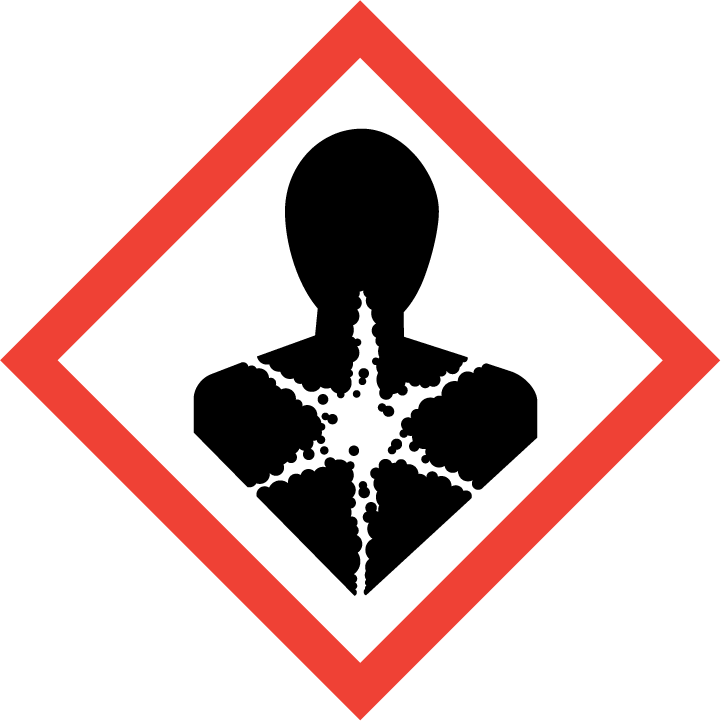
How do you compare toxicity between n-propyl bromide / nPB / 1-bromopropane and other solvents?
The personal hazard associated with a solvent is often defined using threshold limit value (TLV), which is the recommended average exposure in an 8-hour per day, 40 hour work week. This is generally set by the American Conference of Governmental Industrial Hygienists (ACGIH). The unit of measure is parts per million (PPM).
The lower the TLV of a particular substance, the less a worker can be exposed to without harmful effects. TLV is stated on the SDS of chemical products, in additional to recommended personal protection equipment (PPE). Every organization using hazardous chemicals within their facility has the responsibility to equip their facility and personnel to maintain exposure levels below the TLV.
While federal agencies have been slow in regulating n-propyl bromide (nPB), CAL OSHA has a PEL (personal exposure limit, similar to TLV) of 5ppm. ACGIH has listed the TLV for n-propyl bromide (nPB) as 10 ppm, but there is a proposal to decrease it to 0.1 ppm. As a comparison, Chemtronics Tri-V high performance solvents, that were engineered to be drop-in replacements for n-propyl bromide (nPB), have TLV over 200.
With the right ventilation and personal protection equipment (PPE), can I still use n-propyl bromide / nPB / 1-bromopropane safely?
To safely use any chemical, you need to have ventilation and PPE to maintain exposure below the chemicals safety exposure limits. n-propyl bromide (nPB) has a TLV that is 10 or lower (see above), which requires a level of protection that isn’t realistic for most operations.
Even dedicated spray booths can’t guarantee exposure below the set limits. In evaluating spray adhesive applications, the ICF found, “before installation of the spray booths, the overall mean concentration of n-propyl bromide (nPB) was 168.9 ppm, with main exposures in each work area ranging from 117.1 ppm in the Saw area to 197.0 ppm in the covers area. Following installation of the spray booths, the overall main n-propyl bromide (nPB) exposure concentration was 19 ppm, with individual measurements ranging from 1.2 to 58 ppm.” (ICF 2002, Attachment A, pp. 26)
In short, you can have a full spray booth, respirators, and hazmat suit, and you will still have difficulty maintaining exposure below 10ppm, especially as vapors migrate to other parts of the facility.
If it is so harmful, why is n-propyl bromide / nPB / 1-bromopropane still being used?
n-propyl bromide (nPB) based cleaners are effective at quickly removing heavy oils and greases, are nonflammable and non-ozone depleting. None of those characteristics are particularly unique, so what really keeps users from switching is cost. Many of the replacements are 2 to 3 times more expensive, which can be prohibitive for some operations.
Chemtronics offers Tri-V high performance solvent cleaners that have all the advantages of n-propyl bromide (nPB), much lower toxicity, at a similar price. There is no reason to wait – switch to Chemtronics Tri-V today!
Are there safer replacements to n-propyl bromide / nPB / 1-bromopropane?
Chemtronics Tri-V replacement chemistry is an innovative chemistry that does not contain any n-propyl bromide (nPB) and other highly toxic solvents, but still gives you a powerful cleaning action at a reasonable price.
Electro-Wash Tri-V Precision Cleaner is a nonflammable cleaner that quickly removes flux, grease, oils, dirt, dust, and other contaminants from electronic components and assemblies. It removes all types of oil and grease while evaporating quickly and leaving no residues. Tri-V nPB replacement chemistry is an innovative chemistry that does not contain n-propyl bromide (nPB), TCE, hazardous air pollutants or ozone depleting compounds.
Max-Kleen™ Tri-V removes of all types of soils from electronic circuits and relays. Tri-V nPB replacement chemistry is an innovative chemistry that does not contain any n-propyl bromide (nPB), TCE, any hazardous air pollutants or ozone depleting compounds. It is the ideal solvent for most electronic applications. This extra-strength cleaner evaporates quickly without leaving a residue behind.
Max-Kleen Tri-V is a true azeotrope, so both the liquid and vapor phases maintain the same composition. It acts as a single component product, so will not fractionate as it boils. This avoids any performance changes as it is used over a long period of time, or is run through a separate reclamation unit.
Flux-Off Tri-V Flux Remover is an extra strength nonflammable solvent that removes heavy and encrusted flux deposits. This solvent system is engineered to remove all types of flux types while evaporating quickly and leaving no residues.
For help choosing the best replacement for your application, contact your Chemtronics technical support engineer at [email protected] or 770-424-4888. More information is available at www.chemtronics.com.


